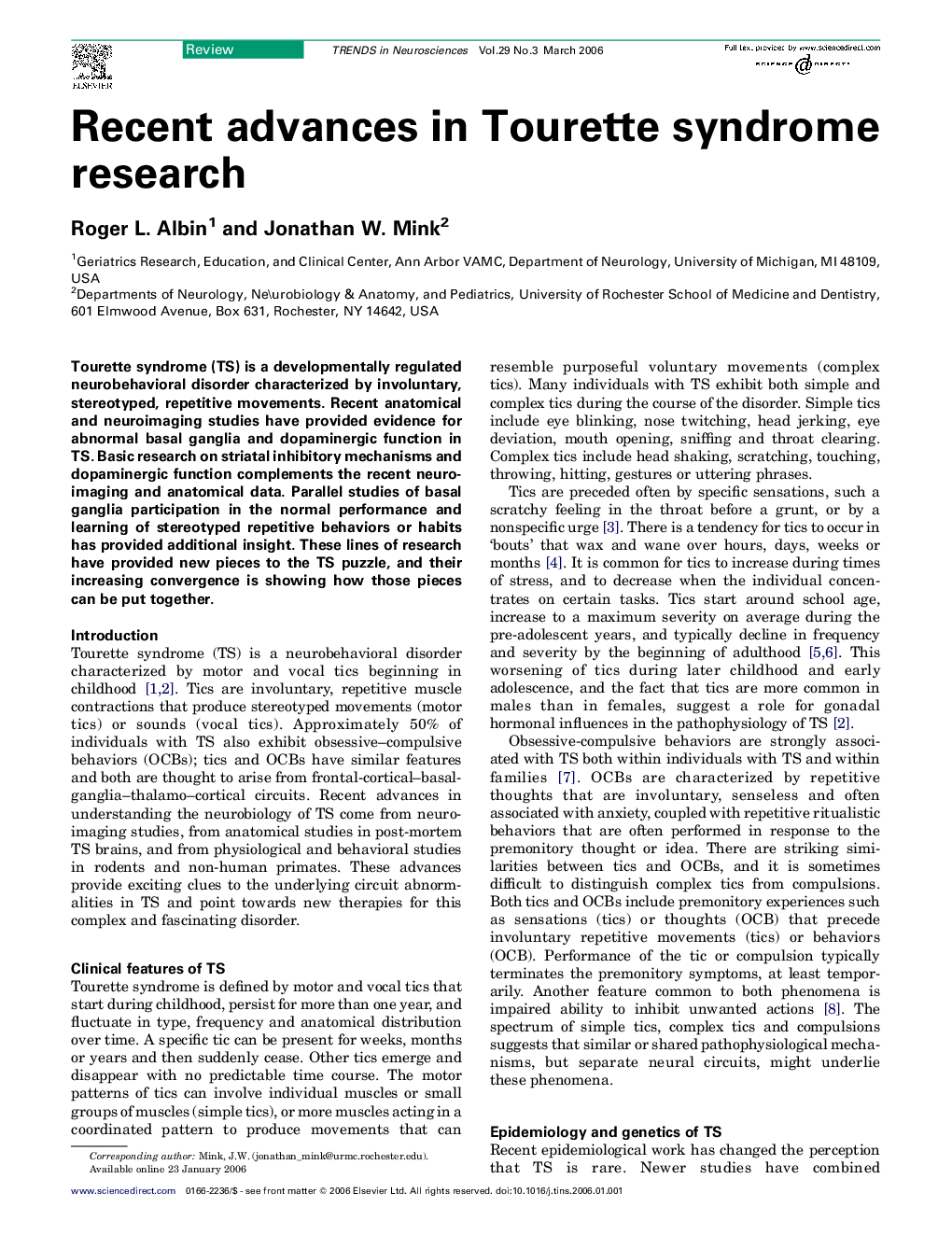| Article ID | Journal | Published Year | Pages | File Type |
|---|---|---|---|---|
| 4354939 | Trends in Neurosciences | 2006 | 8 Pages |
Abstract
Tourette syndrome (TS) is a developmentally regulated neurobehavioral disorder characterized by involuntary, stereotyped, repetitive movements. Recent anatomical and neuroimaging studies have provided evidence for abnormal basal ganglia and dopaminergic function in TS. Basic research on striatal inhibitory mechanisms and dopaminergic function complements the recent neuroimaging and anatomical data. Parallel studies of basal ganglia participation in the normal performance and learning of stereotyped repetitive behaviors or habits has provided additional insight. These lines of research have provided new pieces to the TS puzzle, and their increasing convergence is showing how those pieces can be put together.
Related Topics
Life Sciences
Neuroscience
Neuroscience (General)
Authors
Roger L. Albin, Jonathan W. Mink,
